December 10th, 2022
8minute read
Pilot Officer Jock Adamson was in a foul temper.
He was assigned to No.
3 Squadron of the Royal Australian Air Force flying Curtiss P-40E Kittyhawks.
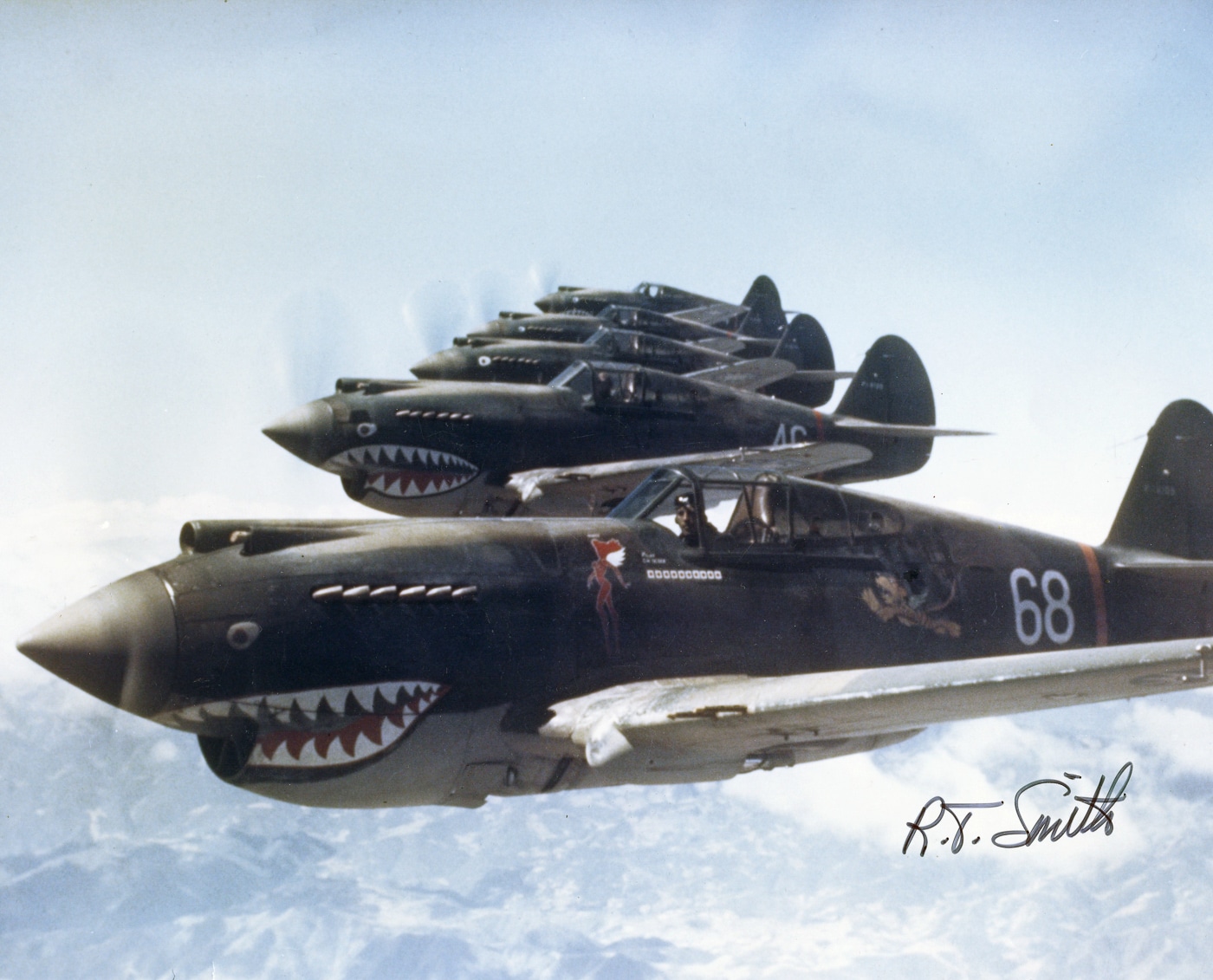
These early P-40B’s sported two cowl-mounted fifties along with four wing-mounted .30-caliber machineguns. Photo: San Diego Air & Space Museum
It had taken him about three minutes to grow weary of this place.
It was April 7, 1943, and Pilot Officer Adamson along with his wingman were on the hunt.
On this day a German column was making a rare daylight convoy movement.
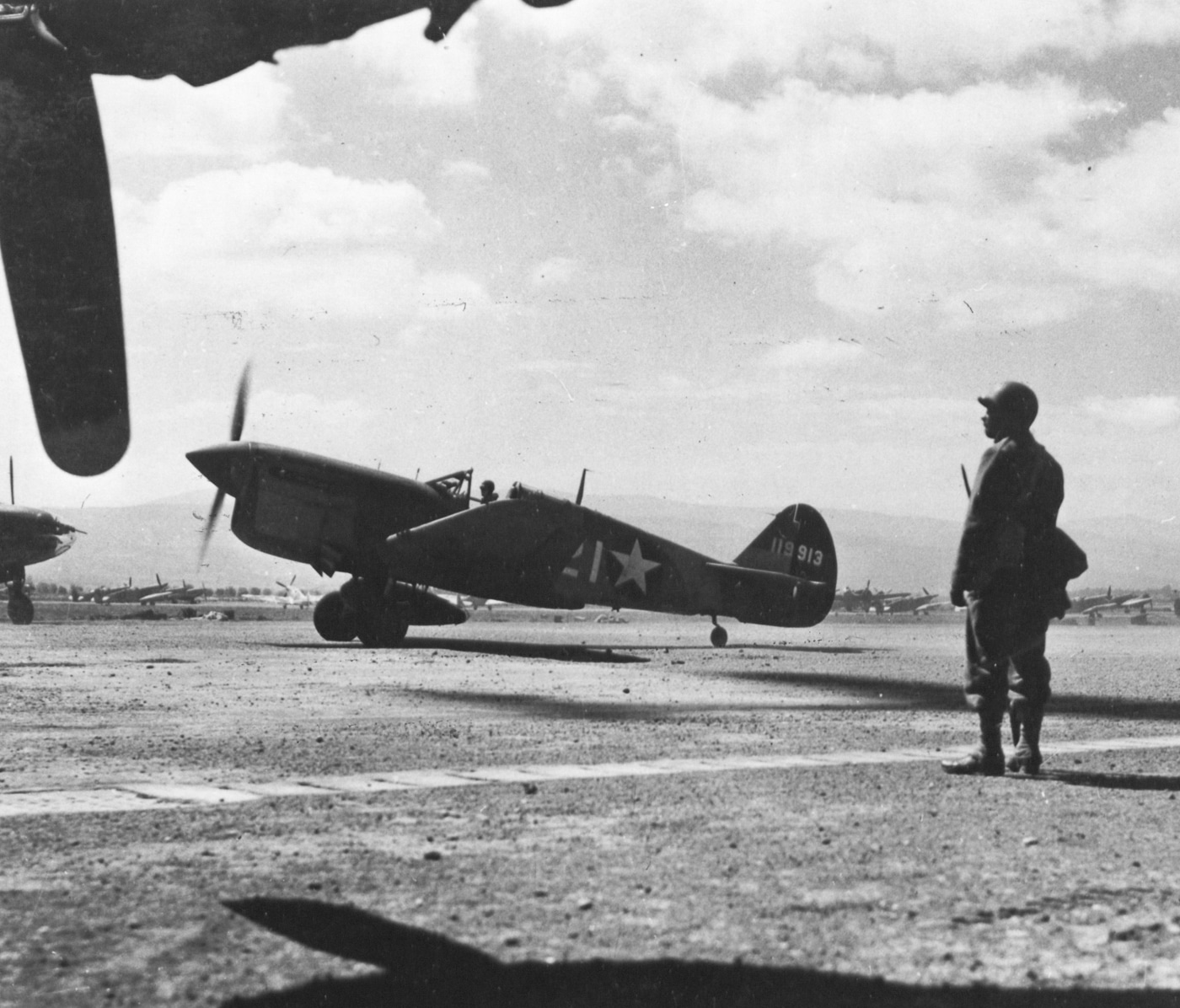
A Curtiss P-40 taxis to takeoff in North Africa in 1943. It was part of the 64th Fighter Squadron, 57th Fighter Group. Photo: NARA
Jock and his mate spotted the dust cloud a dozen miles away.
Without a proper ditch or any foliage, however, the Germans were all but helpless.
The two P-40s swooped up and over, reversing course for another pass from the opposite direction.

On the way to attack Japanese forces, these B-24 Liberator bombers are escorted by Curtiss P-40 fighters over China. Photo: NARA
Jock and his wingman once again unlimbered their half dozen .50s to sow carnage across the German motorized convoy.
Each of Jocks .50 calibers started the engagement with 615 rounds of linked four-and-one ball and tracer.
That gave him a total of 3,690 rounds.
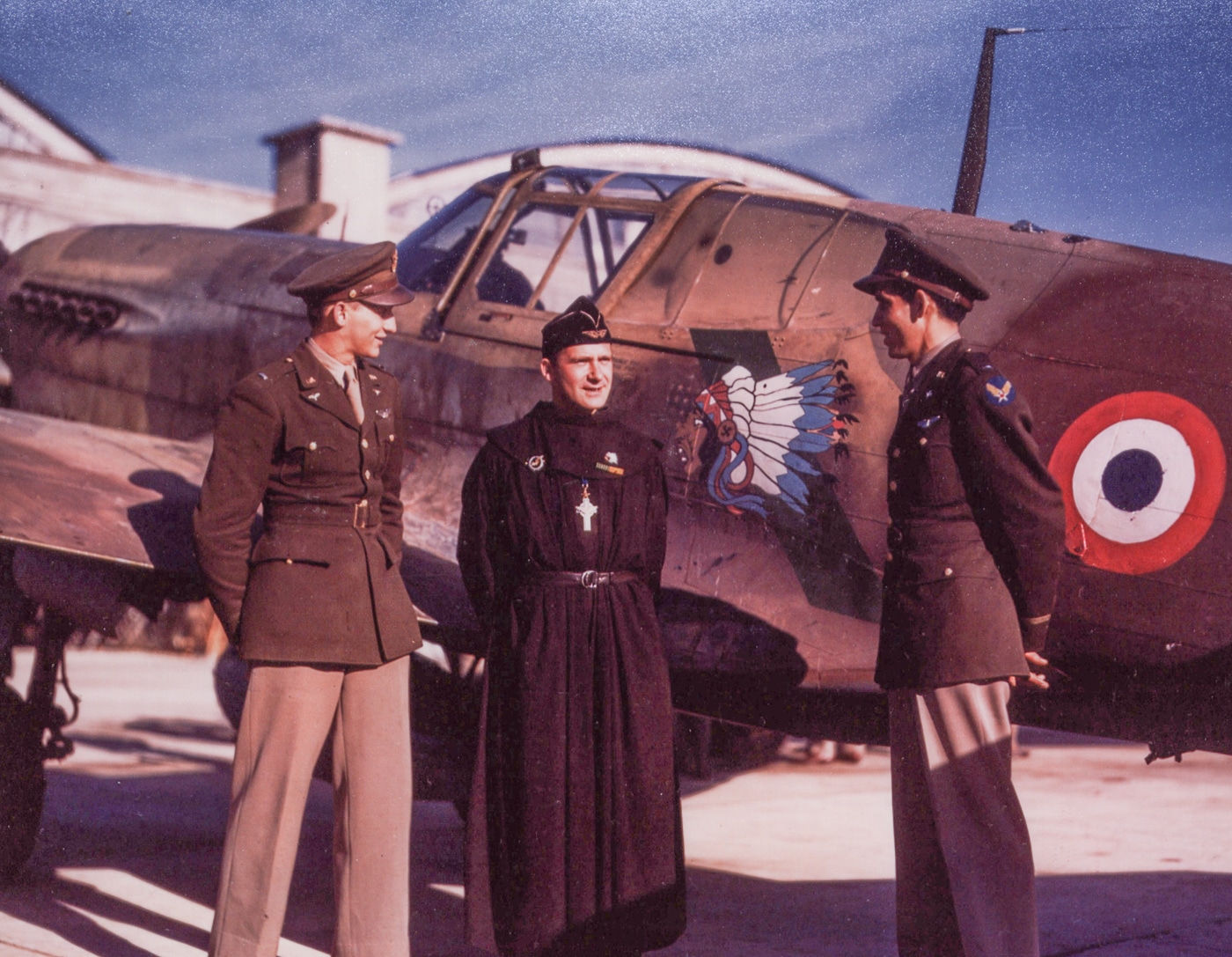
U.S. service members present Curtiss P-40 fighters to Free French forces in North Africa during World War II.
TheAN/M2 guncycled at 850 rounds per minute.
That equated to about forty seconds of fire until he was out of ammo.
Troops caught in the open were torn to pieces by the ferocious half-inch slugs.
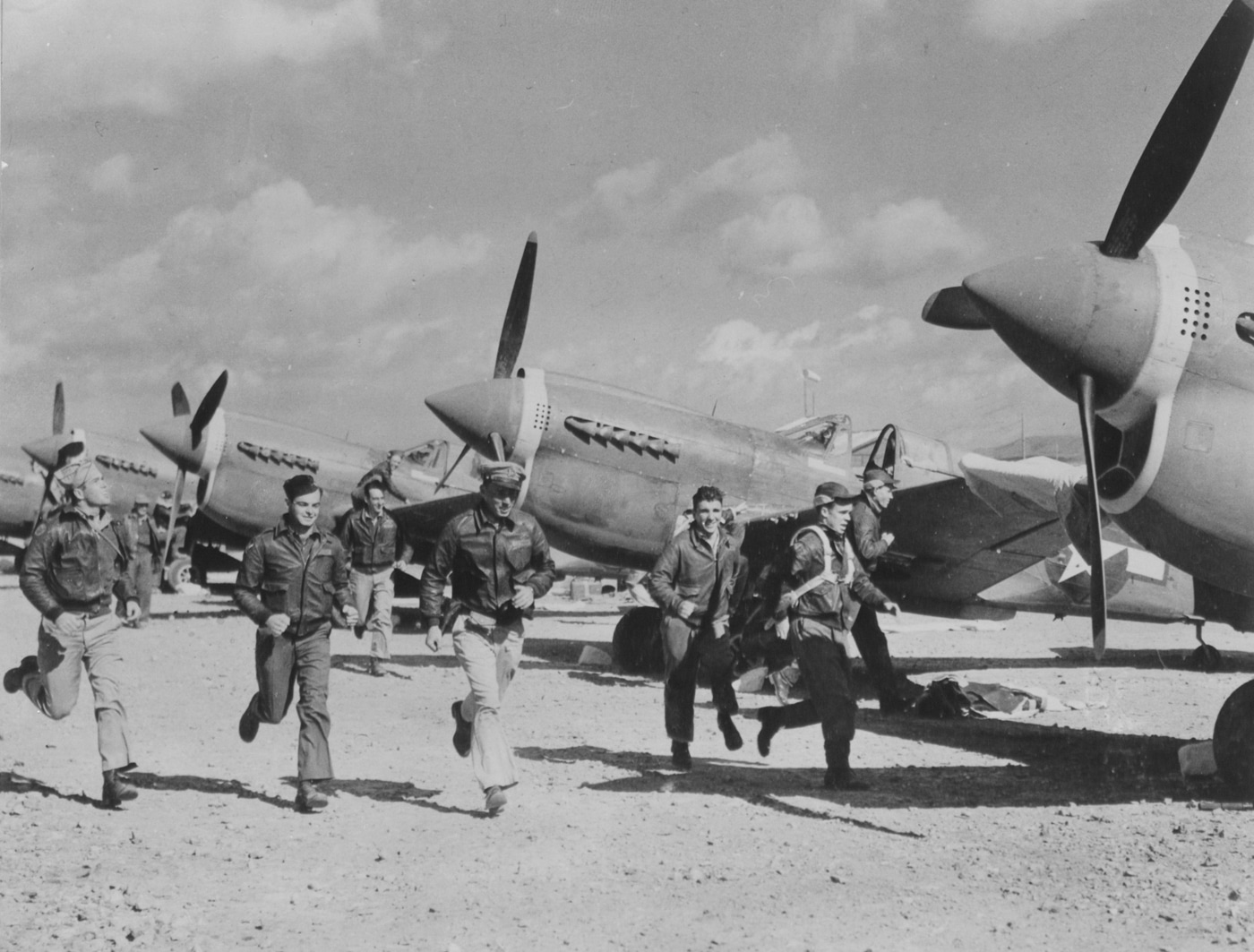
P-40 pilots of the 14th Air Force scramble to meet a Japanese air raid on 03 MAY 1944. Photo: NARA
Several trucks were on fire as was a halftrack.
One Panzerkampfwagen Mk IV tank was badly damaged, and a kubelwagen was a total write-off.
Alongside the kubel was Oberstleutnant Claus von Stauffenberg.
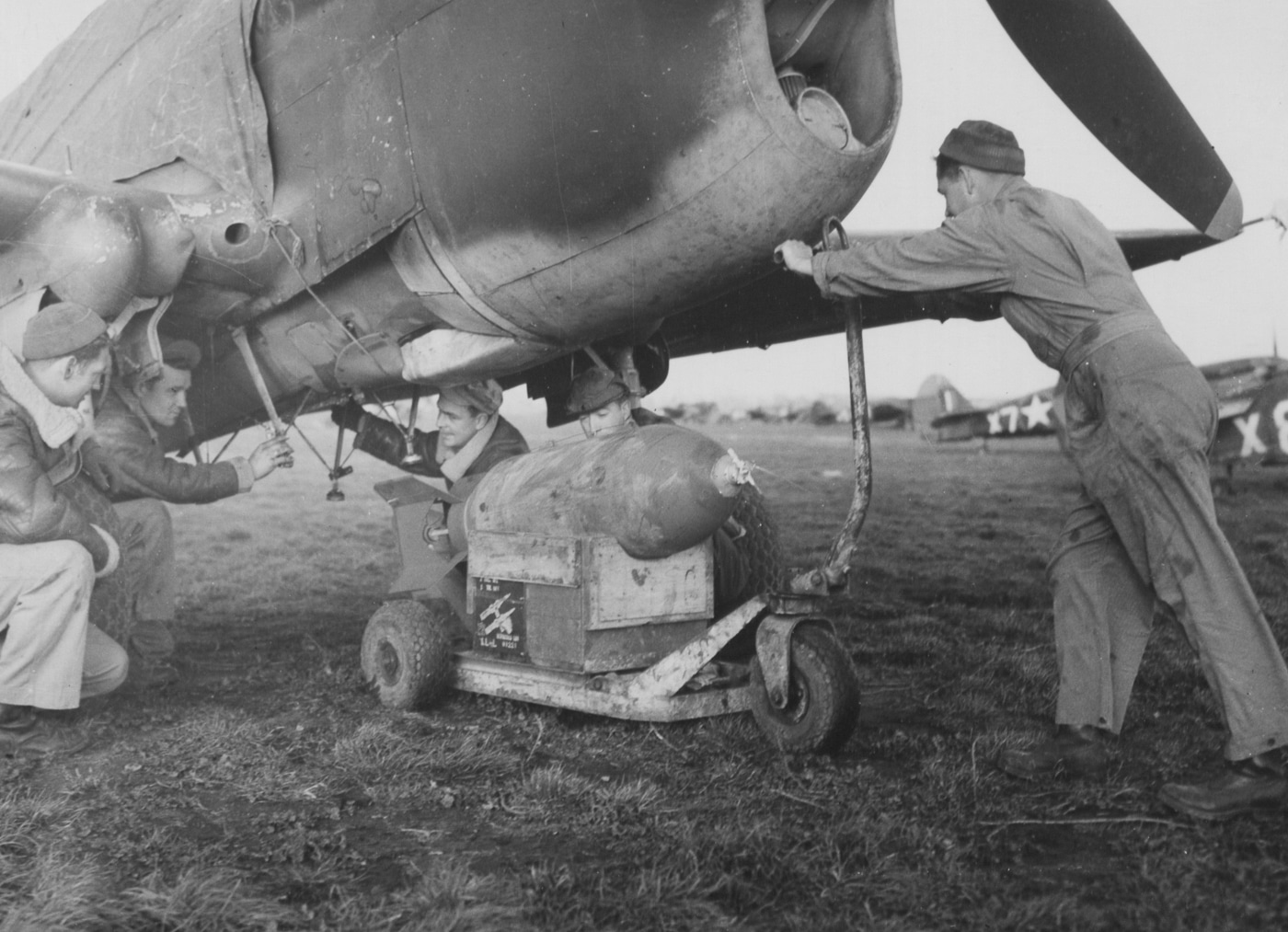
On April 11, 1944, a ground crew loads a 500-pound bomb under the belly of a Curtiss P-40 Warhawk in the 79th Fighter Group. The photo was taken at an air base in Capodichino, Italy. Photo: NARA
Von Stauffenberg was barely alive.
His right hand was shot away, as were two fingers on his left hand.
One round had bounced off the ground and then torn out his left eye.
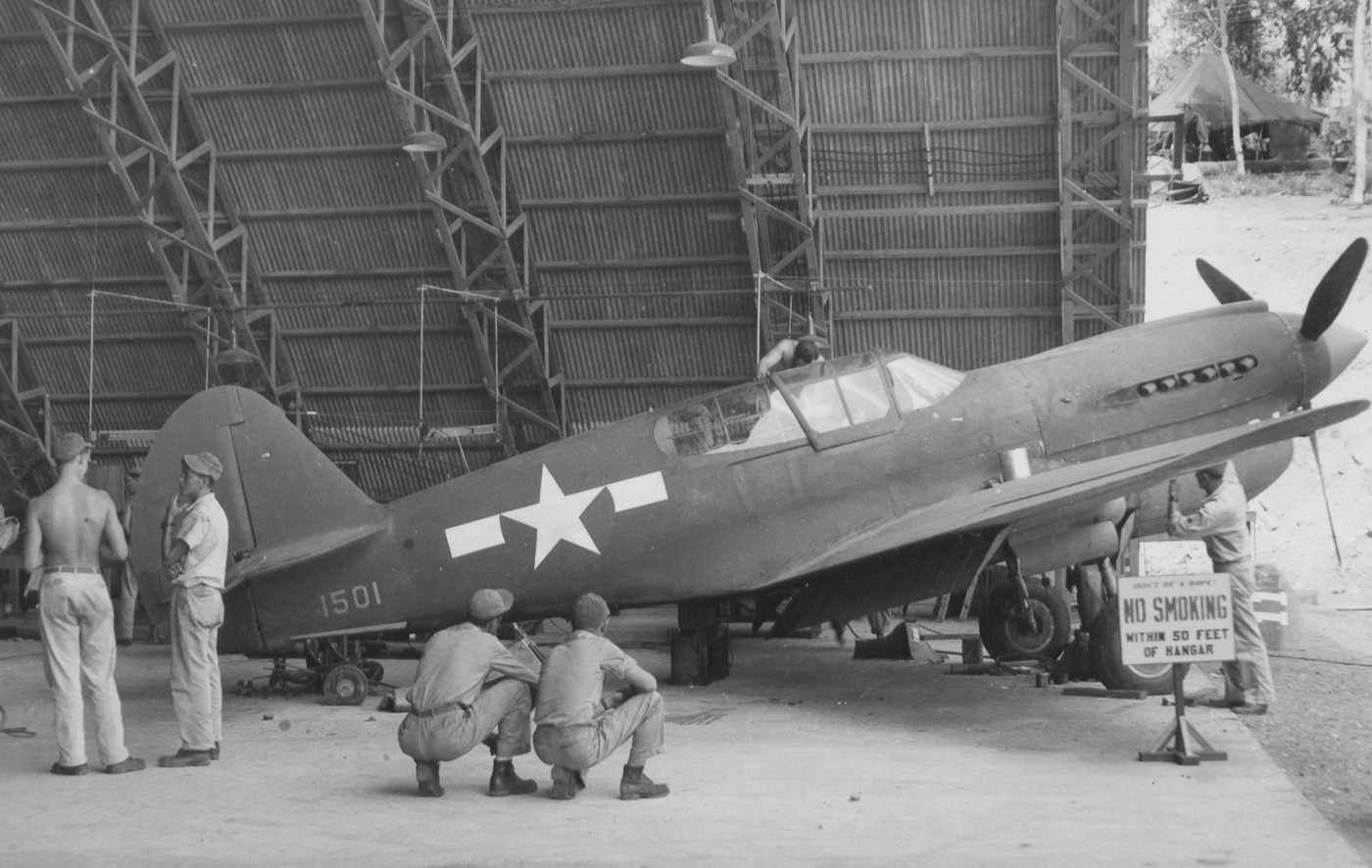
This Curtiss P-40 was converted to a two-seater observation plane. The photo was taken on February 14, 1944 in Papua, New Guinea. Photo: NARA
After three months in-hospital in Munich, von Stauffenberg was finally back on his feet.
Von Stauffenberg excused himself minutes before the bomb detonated.
Hitler went on a rage-driven rampage.

In China, pilots of the 51st Fighter Group sit on the wing of a P-40 fighter to discuss a mission. Photo: NARA
Heinrich Himmler ultimately killed some 4,980 Germans felt to be disloyal in reprisals.
Sometimes in war as in life, little things can be big things.
An advanced all-metal design, the Warhawk first flew in 1938 and entered squadron service a year later.
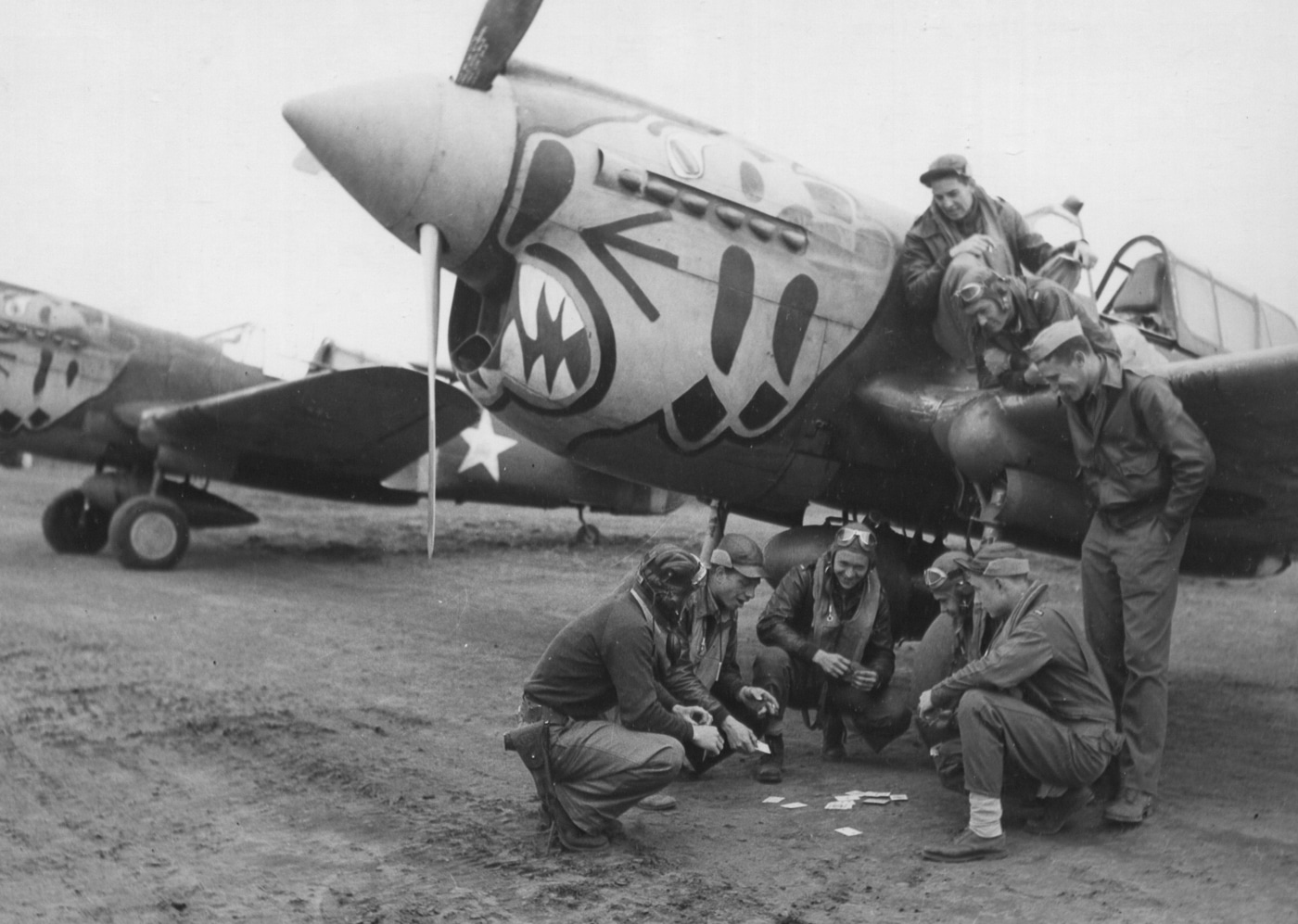
Pilots play cards to pass the time next to a P-40 at their base in Alaska. Photo: NARA
The P-40 was the third-most commonly produced American fighter of the war behind the P-47 Thunderbolt andP-51 Mustang.
Some 13,738 copies rolled off the lines.
New P-40s cost Uncle Sam about $36,000 back in the late 1930s.
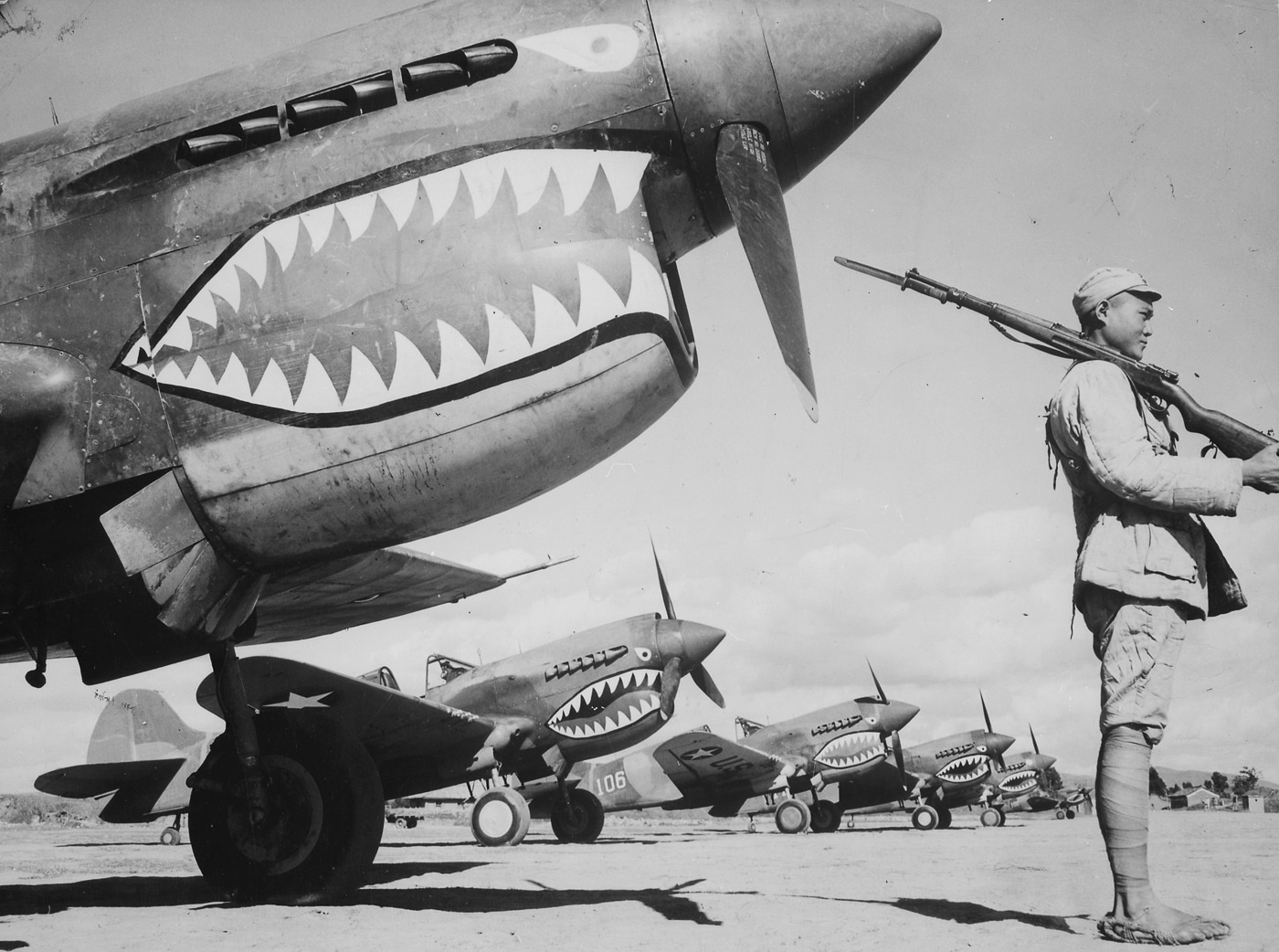
A Chinese soldier guards a line of American P-40 fighter planes, painted with the shark-face emblem of the “Flying Tigers,” at a flying field somewhere in China. Photo: NARA
That would be a bit north of $600,000 today.
The earliest P-40B was equipped with an Allison V-1710 engine producing 1,040 horsepower.
Later P-40E and K models sported half a dozen fifties in the wings.
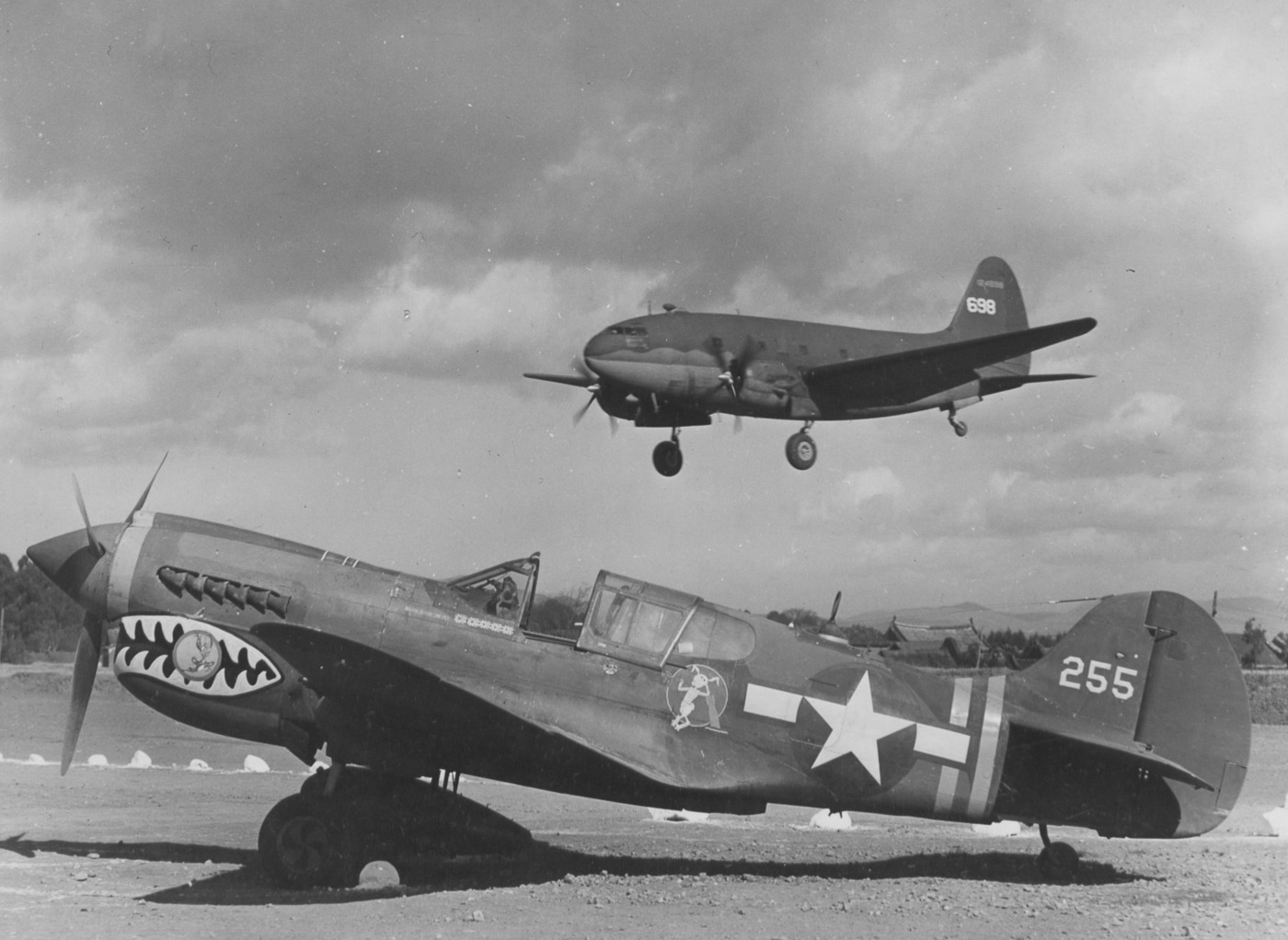
A P-40 Warhawk, part of the famous Flying Tigers, sits near a runway in China while a C-46 Commando lands in the background. Photo: NARA
The planes used by the Australians to nearly kill Claus von Stauffenberg would have been the latter sort.
The Warhawks that were so badly ravaged during the attack on Pearl Harbor were B-models.
The definitive wartime version was the P-40E.
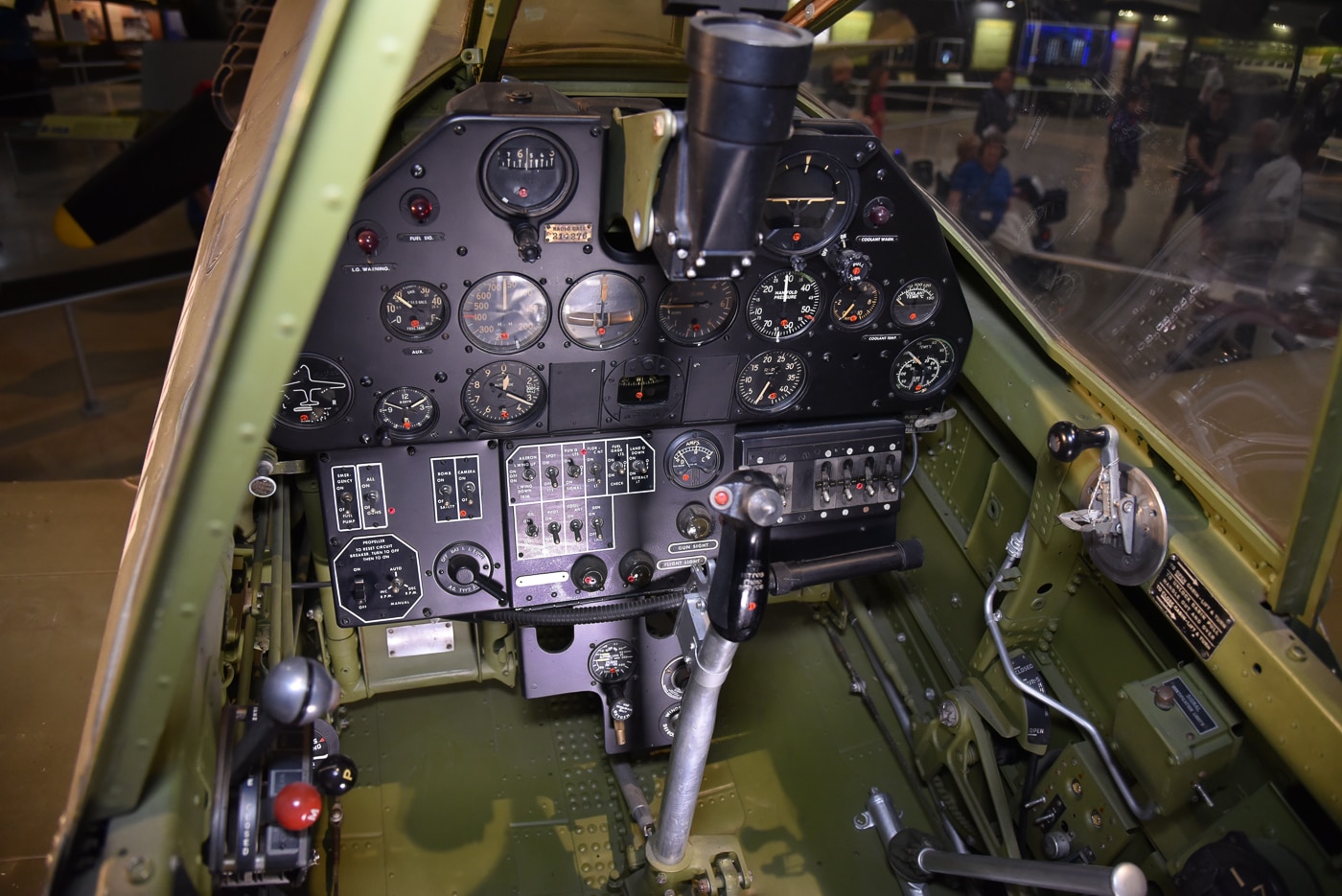
By modern aviation standards, the cockpit of the P-40E Warhawk was fairly austere. Photo: U.S.A.F. Museum
This plane sported an Allison V-1710-39 V-12 liquid-cooled engine producing 1,240 horsepower.
Essentially the same engine was used on theP-38 Lightning.
The gaping radiator underneath the big Allison engine lent itself to a sharks mouth.

The author found the P-40 Warhawk to be a fairly awesome war machine up close.
This flamboyant decoration was pioneered by the P-40s most famous users, Claire Chennaults American Volunteer Group theFlying Tigers.
The landing gear struts fold backwards and the wheels rotate to rest flush in their wells.
The landing gear of theF4U Corsairhas to perform a similar chore.
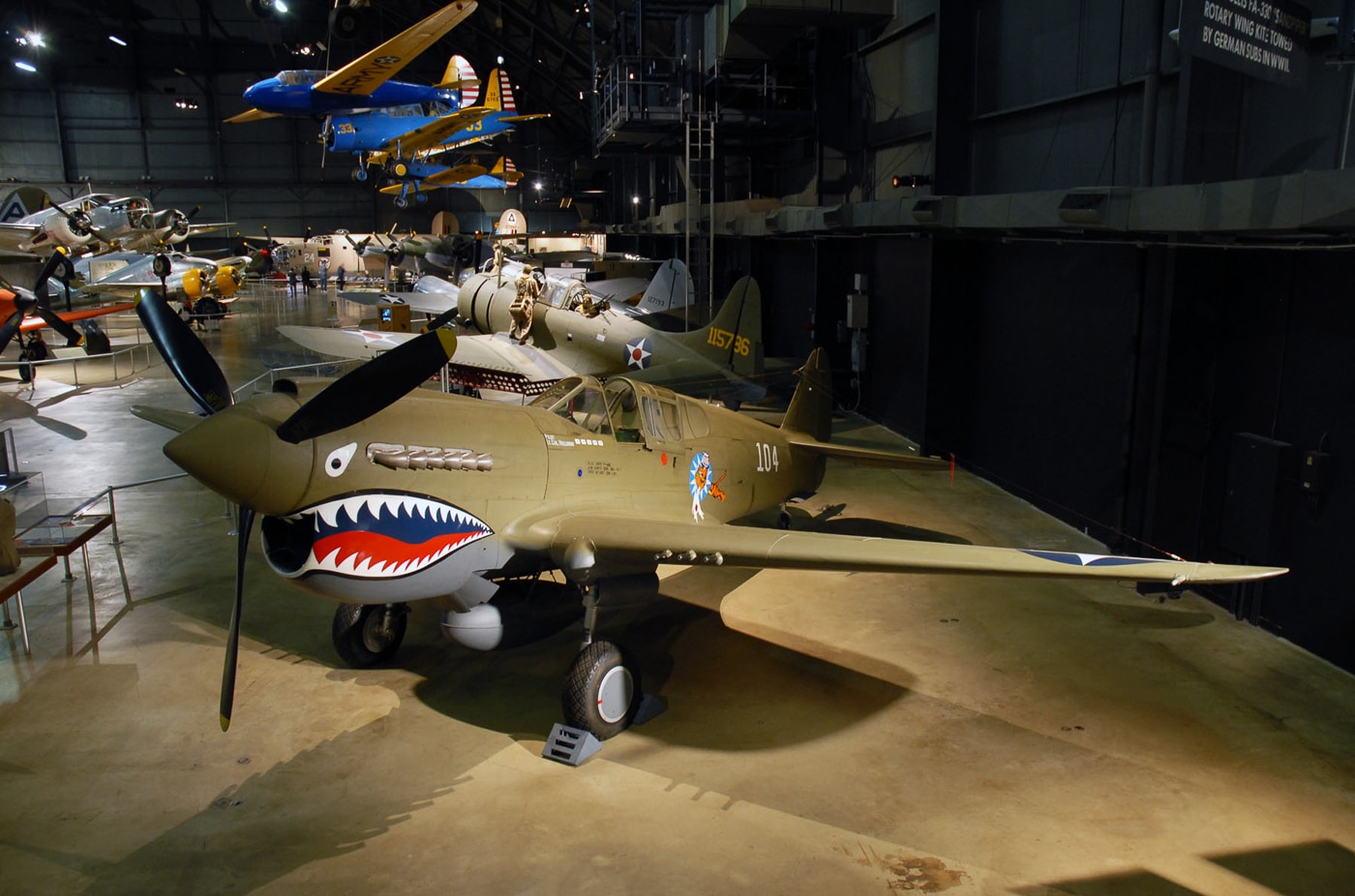
The P-40E was the definitive wartime model. The Warhawk was an effective fighter for its era that held its own against advanced German and Japanese machines in the early years of the war. Photo: U.S.A.F. Museum
Despite this complexity or perhaps because of it, the Warhawks landing track is wide and stable.
This maximized the capabilities of the P-40 while negating some of the advantages of enemy planes.
The P-40 Warhawk is a beautiful war machine that just drips history.
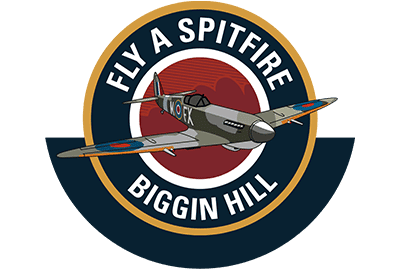
While such planes were cheap in the immediate aftermath of the war, they are breathtakingly expensive today.
The vengeance it wrought eventually led to crushing defeat for the Axis powers.
Special thanks towww.flyaspitfire.comfor the rare opportunity to study one up close.
Go to forum thread




